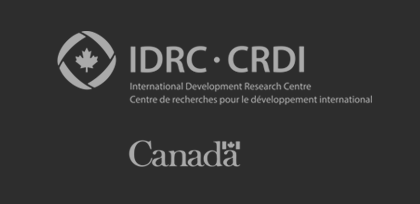Member Profile
Bhakti Salgaonkar Salgaonkar
Country of origin: India Currently in: India, Vasco da gama General field of specialization: Biological Systems and Organisms-
Degrees
2016 Doctorate Other2009 Master Other2007 Undergraduate Other -
Current Research Activities
Biological Systems and Organisms
2009-2015 worked at BITS Pilani University, India. Ph.D. Thesis title: “Synthesis of Polyhydroxyalkanoates by Halophilic Archaea and Bacteria and their Osmoadaptation”. CSIR-SRF (2012-2015) Project title: “Biotechnological application of products from culturable halophilic bacteria and archaea isolated from solar salterns”. UGC Fellow (2009-2012) Project title: “Study of haloarchaea producing polyhydroxyalkanoates”. Halophiles are extremophiles living in extreme salt environments and are a huge untapped resource of potential industrially important metabolic products with interesting industrial applications. My PhD work aimed at exploring the halophiles from solar salterns of Goa and Tamil Nadu, India and screening them for the synthesis of Polyhydroxyalkanoates (PHAs) and studying their mechanism to combat such hypersline environment. Potential biopolymer producing isolates were identified as Bacillus megaterium nd Halogeometricum borinquense. The polymer accumulated was characterized to be a homopolymer of PHB and co-polymer of poly(3-hydroxybutyrate-co-3-hydroxyvalerate) [P(HB-co-HV)]. High production costs, and low yields are the major hurdles for the commercial production and application of PHA. Our study, reported the potential of Hgm. borinquense strain E3 to synthesize copolymer of [P(HB-co-HV)] naturally, unlike most of the bacteria which require media supplements such as propionic/valeric acid which are expensive & toxic as precursors for PHBV synthesis. Moreover, industrial processes require organisms with standing harsh physicochemical conditions like high salt concentration analogous to high ionic strength and low water activity (aw) and employing extreme halophiles can efficiently withstand and grow at such extreme conditions.
Publications resulting from Research:
Publications in International Journals
(1) Bhakti B. Salgaonkar & Rizma Rodrigues (2019) A Study on the Halophilic Archaeal Diversity from the Food Grade Iodised Crystal Salt from a Saltern of India. Microbiology, vol.88 (6), 709-719. (doi: 10.1134/S002626171906016X).
(2) Das, D., Kalra, I., Mani, K., Bhakti B. Salgaonkar, & Braganca, J. M. (2019). Characterization of extremely halophilic archaeal isolates from Indian salt pans and their screening for production of hydrolytic enzymes. Environmental Sustainability, 1-13. (doi.org/10.1007/s42398-019-00077-x)
(3) Bhakti B. Salgaonkar, Divya T. Sawant, Saranya Harinarayanan and Judith M. Bragança (2019) Alpha‐amylase Production by Extremely Halophilic Archaeon Halococcus Strain GUVSC8. Starch - Stärke. (doi: 10.1002/star.201800018, 1-10).
(4) Bhakti B. Salgaonkar, Kabilan Mani and Judith M. Bragança (2018) Sustainable Bioconversion of Cassava Waste to Poly(3-hydroxybutyrate-co-3-hydroxyvalerate) by Halogeometricum borinquense Strain E3. Journal of Polymers and the Environment, 1-10. (DOI: 10.1007/s10924-018-1346-9).
(5) Bhakti B. Salgaonkar and Judith M. Bragança (2017) Utilization of Sugarcane Bagasse by Halogeometricum borinquense Strain E3 for Biosynthesis of Poly(3-hydroxybutyrate-co-3-hydroxyvalerate). Bioengineering, 4, 50. (DOI: 10.3390/bioengineering4020050).
(6) Bhakti B. Salgaonkar, Deepthi Das and Judith M. Bragança (2016) Resistance of extremely halophilic archaea to zinc and zinc oxide nanoparticles. Applied Nanoscience 6: 251-258. (DOI: 10.1007/s13204-015-0424-8).
(7) Bhakti B. Salgaonkar and Judith M. Bragança (2015) Biosynthesis of Poly(3-hydroxybutyrate-co-3-hydroxyvalerate) by Halogeometricum borinquense strain E3. International Journal of Biological Macromolecules 78:339-346 (DOI: 10.1016/j.ijbiomac.2015.04.016).
(8) Kabilan Mani, Sivaraman Chandrasekaran, Bhakti B. Salgaonkar, Srikanth Mutnuri, Judith M. Bragança (2015) Comparison of bacterial diversity from solar salterns and a simulated laboratory study. Annals of Microbiology 65(2):995-1005. (DOI: 10.1007/s13213-014-0944-6).
(9) Deepthi Das, Bhakti B. Salgaonkar, Kabilan Mani and Judith M. Bragança (2014) Cadmium resistance in extremely halophilic archaeon Haloferax strain BBK2. Chemosphere Journal 112: 385–392. (DOI: 10.1016/j.chemosphere.2014.04.058).
(10) Vidhya Prabhudessai, Bhakti B. Salgaonkar, Judith M. Bragança and Srikanth Mutnuri (2014) Pretreatment of Cottage Cheese to Enhance Biogas Production. BioMed Research International Article ID 374562, 6 pages. (DOI: 10.1155/2014/374562).
(11) Bhakti B. Salgaonkar, Kabilan Mani and Judith M. Bragança (2013) Accumulation of polyhydroxyalkanoates by halophilic archaea isolated from traditional solar salterns of India. Extremophiles Journal 17:787-795. (DOI: 10.1007/s00792-013-0561-5).
(12) Bhakti B. Salgaonkar, Kabilan Mani and Judith M. Bragança (2013) Characterization of polyhydroxyalkanotes accumulated by a moderately Halophilic Salt pan isolate Bacillus megaterium strain H16. Journal of Applied Microbiology 114:1347-1356. (DOI: 10.1111/jam.12135).
(13) Adit Chaudhary, Imran Pasha M., Bhakti B. Salgaonkar, Judith M. Braganca (2014) Cadmium Tolerance by Haloarchaeal Strains Isolated from Solar Salterns of Goa, India. International Journal of Bioscience, Biochemistry and Bioinformatics 4 (1), 1. (DOI: 10.7763/IJBBB.2014.V4.299).
(14) Kabilan Mani, Bhakti B. Salgaonkar, Deepthi Das and Judith M. Bragança (2012) Community solar salt production in Goa, India. BMC Aquatic Biosystems. 8:30. (DOI:10.1186/2046-9063-8-30).
(15) Kabilan Mani, Bhakti B. Salgaonkar and Judith M. Bragança (2012) Culturable halophilic archaea at the initial and crystallization stages of salt production in a natural solar saltern of Goa, India. BMC Aquatic Biosystems 8:15. (DOI: 10.1186/2046-9063-8-15).
(16) Bhakti B. Salgaonkar, Kabilan Mani, Anjana Nair, Sowmya Gangadharan and Judith M. Bragança (2012) Interspecific interactions among members of family Halobacteriaceae from natural solar salterns. Probiotics and Antimicrobial Proteins. 4(2):98-107. (DOI: 10.1007/s12602-012-9097-8).
(17) Bhakti B. Salgaonkar, Kabilan Mani and Judith M. Bragança (2011) Sensitivity of Haloarchaea to eubacterial pigments produced by Pseudomonas aeruginosa SB1. World Journal Microbiology Biotechnology. 27:799–804. (DOI: 10.1007/s11274-010-0519-z).
Book Chapters
(1) Bhakti B. Salgaonkar and Judith M. Bragança (2019) Production of polyhydroxyalkanoates by extremophilic microorganisms through valorization of waste materials. Publisher: Elsevier. Advances in Biological Science Research, Chapter 26, 419-443.
(2) Bhakti B. Salgaonkar and Judith M. Bragança (2017) Polyhydroxyalkanoates Biosynthesis of Polyhydroxyalkanoates by Extremely Halophilic Archaea from Various Substrates.
(3) Kabilan Mani, Bhakti B. Salgaonkar and Judith M. Bragança (2013) Molecular Microbial ecology of solar salterns of Goa and the isolation of culturable Haloarchaea. New India Publishers Chapter 6, Pg. No: 59-74: In Microbial Diversity and Its Applications. Barbudde, S.B., R. Ramesh and N.P. Singh.
Current profession
Current professional activities type:Research2017- Present working at BITS Pilani University, India, as CSIR-RA on Project entitled “Application of polyhydroxyalkanoates obtained from halophilic archaea as potential biomaterial in tissue engineering”. My present focus is on optimization and scaling up of the polyhydroxyalkanoates (PHAs) production by extremely halophilic archaea using various commercial and renewable agro-industrial wastes. I will also be synthesizing and characterizing macroporous PHA films and scaffolds and conducting tissue culture studies for determining their biocompatibility for their biomedical application.
Workshop and Conference Attended
2017 Indian Institute of Science Education and Research (IISER), Pune Science Administration and Management for Women2016 Microbial Culture collection (MCC), Pune Nomenclature of Archaea and Bacteria2014 Birla Institute of Technology & Science (BITS) Pilani, K K Birla Goa Campus, India Advanced Materials and their Applications in Nanotechnology (AMAN 2014)2012 Birla Institute of Technology & Science (BITS) Pilani, K K Birla Goa Campus, India Scientific Writing and Publishing2012 Birla Institute of Technology & Science (BITS) Pilani, K K Birla Goa Campus, India RNA to Protein, A Comprehensive Workshop2010 Birla Institute of Technology & Science (BITS) Pilani, K K Birla Goa Campus, India International workshop on bioremediation2008 Goa University, Goa-India Advanced Good Clinical PracticePresentation given
2015Biosynthesis of a Potential Biodegradable Food Grade Polymer by Extremely Halophilic Archaea for Flexible PackagingKottayam, Kerala, IndiaEvent: First International Conference on Advances in Food Science and Technology2015Utilization of Commercial and Agro-Industrial Wastes as Substrates for the Biosynthesis of Polyhydroxyalkanoates by Extremely Halophilic ArchaeaPonda Education Society (P.E.S.) College Ponda Goa, IndiaEvent: Archaea: Microbes of the Third Domain of Life -
Other Awards
Apr 2017of Scientific & Industrial Research-Research Associateship (CSIR-RA)I am presently working as CSIR-RA on a project entitled Application of polyhydroxyalkanoates obtained from halophilic archaea as potential biomaterial in tissue engineering. My present focus is on optimization and scale up of the polyhydroxyalkanoates production by Halogeometricum borinquense strain E3 using various commercial & renewable agro-industrial wastes. Synthesis and characterization of macroporous PHA films & scaffolds, & determining their biocompatibility for biomedical application.Apr 2012Council of Scientific & Industrial Research-Senior Research Fellowship (CSIR-SRF)I was awarded CSIR-SRF on project entitled Biotechnological application of products from culturable halophilic bacteria and archaea isolated from solar salterns. My project involved screening of halophiles for various biotechnological and industrial potential such as extremozymes (enzymes with catalytic activity at extremes), PHAs, compatible solutes, pigments with photoprotective potential, etc. Characterization of the halophiles with potential and characterization of the product obtained.Sep 2012Department of Biotechnology (DBT-CTEP) Travel GrantReceived travel grant from Department of Biotechnology (DBT-CTEP Code: DBT/CTEP/02/201200602) for presenting poster entitled “Accumulation of Polyhydroxybutyrate by Halophiles from Solar Salterns of India” at 9th International Congress on Extremophiles 2012, 10-13th September 2012, Sevilla, Spain.Sep 2015Best oral presentation award4) Presented and received best oral presentation award for paper entitled “Utilization of Commercial and Agro-Industrial Wastes as Substrates for the Biosynthesis of Polyhydroxyalkanoates by Extremely Halophilic Archaea” at DST Sponsored National Level Seminar on “Archaea: Microbes of the Third Domain of Life”, 28th September 2015, Ponda Education Society (P.E.S.) College, Ponda Goa, India.Feb 2017Graduate Aptitude Test in Engineering (GATE)Qualified Graduate Aptitude Test in Engineering (GATE) examination, in Microbiology and Botany, funded by Ministry of Human Resource Development (MHRD) and conducted by Indian Institute of Technology Roorkee.Aug 2016Agricultural Scientists Recruitment Board, National Eligibility Test (ASRB-NET)Qualified Agricultural Scientists Recruitment Board, National Eligibility Test (ASRB-NET) in 2016.






